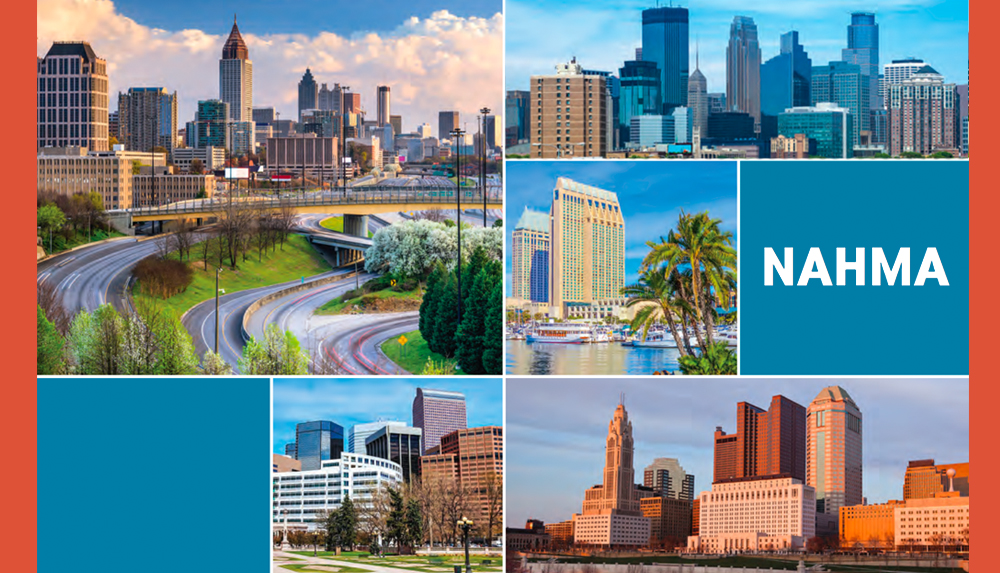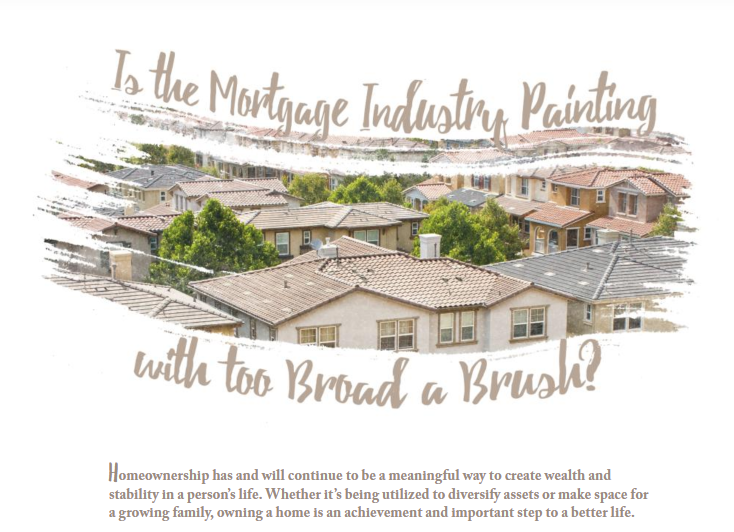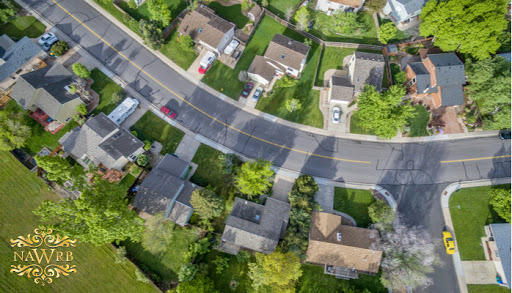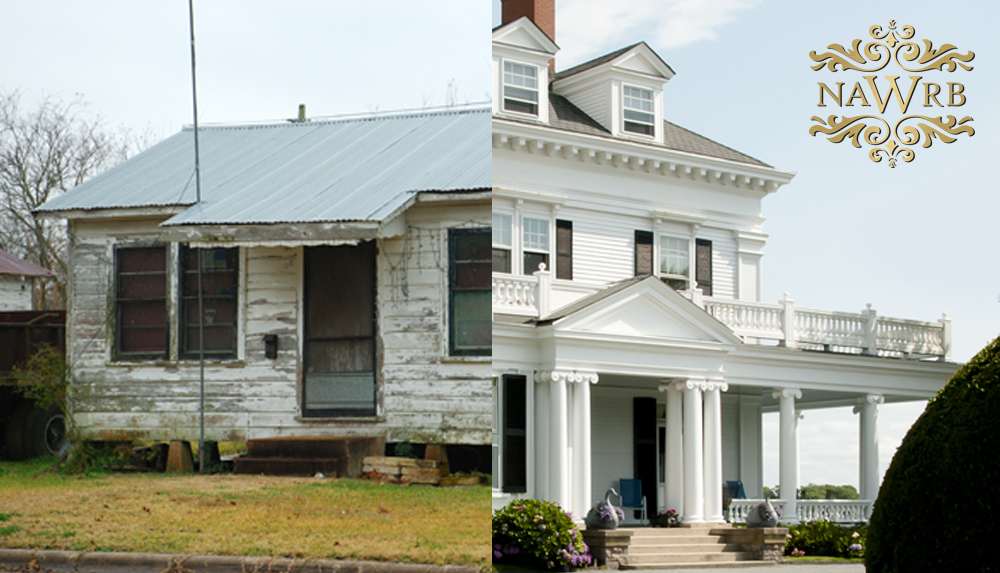In their first national survey on financial well-being, the Consumer Financial Protection Bureau (CFPB) has found that over 40 percent of U.S. adults have a hard time making ends meet. Utilizing a 10-question survey, the National Financial Well-Being Survey provides the “first-ever national data directly measuring the financial well-being of U.S. consumers.”

Know an Incredible Woman Preserving the
Quality of Life During COVID-19?
Submit your story today!
Read More

Consulting & Branding Opportunities
Grant your business access to insider,
proven knowledge to improve the quality of your procured
services and maximize business performance.

If you need D&I
Contact Us!
A Team Focused on Bring Diversity and Inclusion to Every Level
Learn More

#1 Top Real Estate Influencer
Desiree Patno
Diversity & Inclusion, Quality of Life, Know the Rules of the Game ®
Your Next Event
Grow Your Business
NAWRB: An SBA Resource
NAWRB is listed as a women-owned business resource for the SBA.
Check It Out
NAWRB Aging Population
Help Protect Elders
from Financial Abuse
Over $36.5 billion a year is lost annually in the U.S.
Prevent Financial Abuse

Women's Homeownership:
Dream. Stability. Sanctuary.
Life often presents us
with unplanned disruptions.

AI Technology
with
a Human Touch
Is
The Perfect Balance


NAWRB Women's Global Resource Center
A women’s depository for vendors & clients to grow their diverse spend & increase women’s employment at all levels within the housing ecosystem.

Tag Archives: poverty
5 Cities Working to Preserve Affordable Housing
With rising housing costs, renters across the United States are struggling to find affordable housing. Millennials—who comprise half of all renters—have to balance appreciating rents with high student loan debt and low wages. The availability of affordable housing is paramount, as it allows Americans to save money, provide stability for their families and create better lives.
Is the Mortgage Industry Painting with too Broad a Brush?
Becoming a homeowner helps safeguard a person’s professional achievements and can pull them out of poverty. However, current mortgage lending trends show that a significant portion of Americans are being all but excluded from homeownership by stringent credit-assessing practices leading to mortgage rejections.
The Great Recession, which saw nearly 8 million American homes fall into foreclosure, highlighted the risks and issues in housing boom mortgage lending; it was this financial crisis that set the scene for the Dodd-Frank Act of 2010, which imposed rigid standards for home loan qualification.
Recent research by Alberto Rossi and Francesco D’Aunto, assistant professors of finance from the University of Maryland’s Robert H. Smith School of Business, shows that following the passage of Dodd-Frank, mortgages obtained by middle-class households decreased by 15 percent. Aiming to protect the economy, financial institutions and prospective homebuyers, these regulations have at times overburdened the mortgage process, leaving Americans stagnant in their journey to a better future.
When it comes to lending, is the mortgage industry painting with too broad a brush?
Minorities
Pew Research Center data reveals that Black and Hispanic homebuyers experience significantly higher difficulty obtaining conventional mortgages than whites and Asians, and usually pay higher interest rates when they are approved. Mortgage rejection is one contributor to the homeownership rate disparity of Black (41.3 percent) and Hispanic (47 percent) households in comparison with white households (71.9 percent).
According to Pew Research Center analysis of Home Mortgage Disclosure Act (HMDA) data, in 2015, 19.2 percent of Hispanic applicants and 27.4 percent of black applicants were denied mortgages, compared to 11 percent of white and Asian applicants. For Blacks, credit history is the number one cited reason for mortgage rejections; for the three other groups, debt-to-income ratio was the foremost explanation.
Contributing to lower affordability, mortgage rates also enact an uneven impact on homebuyers. In 2015:
• 60 percent of Black householders and 65 percent of Hispanic householders had mortgage rates below 5 percent, compared to 73 percent of white householders and 83 percent of Asian householders
• 18 percent of Hispanic householders and 23 percent of Black householders had mortgage rates of 6 percent or more, compared to 13 percent of white householders and 6 percent of Asian householders
In addition to these mortgage difficulties, an emerging trend is a significantly smaller and less diverse mortgage applicant pool. Pew reports that in 2005, about 10 percent of conventional mortgage applications were from Black households, and 14 percent came from Hispanic households. In 2015, less than 4 percent of these applications came from Black households, and fewer than 7 percent were from Hispanic households.
The inequality in mortgage accessibility and interest rates is formidable, meaning that a disparate amount of Black and Hispanic households are unable to achieve homeownership like their white and Asian counterparts. One issue that must be understood in order to successfully navigate the future of the industry is the reason behind the sharp decline in conventional mortgage applications.
Is poverty the main factor?
U.S. Census Bureau data shows that poverty levels of Hispanic and Black households are actually decreasing. From 2014 to 2015, Hispanic poverty level declined from 23.6 to 21.4 percent, and the median annual income of Hispanic-origin households rose 6.1 percent, from $42,540 to $45,148. Similarly, the poverty level of Black households decreased to 24.1 percent from 26.2, and their median annual income increased 4.1 percent, from $35,439 to $36,898.
Are Americans losing the desire to own homes?
While the role of poverty cannot be underestimated, it is necessary to assess the other aspects at play. As recent U.S. Census Bureau data affirms, the 63.6 percent homeownership rate in the first quarter of 2017 was not statistically different from the 63.5 percent rate in the first quarter of 2016 or the 63.7 percent rate in last year’s fourth quarter.
This means that in the past year, the homeownership rate has neither worsened nor improved, but it has been on a steady decline since 2006. Mortgage rates, which have hit historic lows in recent years, add another piece to the puzzle.
According to the Federal Housing Finance Agency (FHFA), the average interest rate on all mortgage loans increased in December (3.91 percent), January (4.17 percent) and February (4.25 percent) before dropping 13 basis points in March (4.12 percent). The FHFA House Price Index (HPI) also reveals that home prices went up 6.2 percent from the fourth quarter of 2015 to the fourth quarter of 2016. The flex in interest rates and rising prices could be outweighing the benefits of homeownership for prospective buyers.
 Women
Women
Women are another market expressing uncertainty towards the housing market. Like minorities, women face roadblocks when procuring mortgages. A new study from the Urban Institute, Women Are Better than Men at Paying Their Mortgages, describes that when examining loan performance for the first time by gender, women’s lower credit scores do not indicate weaker performances, and women actually perform better than men. The report found that female-only borrowers actually default less than male-only borrowers. For mortgages originated from 2004 to 2007, the default rate for female-only borrowers was 24.6 percent, compared with 25.4 percent for male-only borrowers.
Despite this repayment performance, single borrowers, particularly women, have higher mortgage rates; from 2004 to 2014, the average rate for female-only borrowers was 5.48 percent compared to 5.41 percent for male-only borrowers. A 2011 Journal of Real Estate Finance and Economics study also shows that on average, women pay more for mortgages than men; women’s mean interest rates are .4 percent higher than men’s. While the repayment figures are not statistically different, women perform on par with men, emphasizing the lack of evidence-based explanation for the higher mortgage rates women experience.
In some demographics women even depict higher homeownership rates than men. In 2015, the homeownership rate of female householders in 1-person households was 24.56 percent higher than the homeownership rate of male householders in the same category, according to Census Bureau data on national household demographics.
There remains the question; do women want to become homeowners? When analyzing the benefits, homeownership may not be a desired step, especially if women are single and have only one paycheck. With lower incomes and higher mortgage rates, women experience a tougher time paying back their loans, and their interest rates make accumulating wealth through homeownership a discouraging task. It isn’t difficult to recognize that for some women, homeownership can seem like a more prudent step in the future.
Credit
On the road to access mortgages, Americans’ relationship with banks is often center stage. The FDIC’s 2016 biennial National Survey of Unbanked and Underbanked Households shows:
• 7 percent of households were unbanked, having no account relationship with an insured institution
• 19.9 percent of households were underbanked, encompassing households in which a person had a bank account, but still resorted to alternative financial services providers throughout the year
• The survey found that 27 percent of households, or 90 million Americans, were unbanked or underbanked
• The following segments have a higher probability of being unbanked or underbanked
o 42 percent of households with incomes below $30,000 per year
o 49 percent of African American households
o 46 percent of Hispanic households
o 46 percent of households headed by a working-age individual with a disability
Without a solid baking relationship, it is hard for a person to have credit scores that satisfy current mortgage lending standards. Unbanked and underbanked describes millions of families in the United States, meaning millions of people without the benefits of homeownership and an economy missing out on their buying power.
The recent Bankrate Financial Security Index found that only 52 percent of Americans have more money in emergency savings than credit card debt, and 24 percent have more credit card debt than emergency savings; 17 percent remain in the middle with no savings or debt. These figures emphasize the importance of protecting what little savings consumers have. As the U.S. continues to recover from a recession that saw millions of people’s homes and life savings slip out of their hands, the need for banks and financial institutions that protect consumers’ savings through sound financial practices is paramount.
Irresponsible lending led to the worst recession in recent history, but stringent standards are effectively preventing Americans from accessing mortgages, homeownership, and creating better lives. People capable of repaying home loans should be allowed the opportunity to do so, and those not in a position to obtain mortgages need to make the necessary changes to situate themselves for homeownership, such as opening a bank account. With rising prices, unpredictable interest rates and a stagnant homeownership rate, actions need to be mindful in order to empower today’s American homebuyers and would-be homebuyers.

Newsletter: The Key to Maintaining Relationships with Women – The Poverty Problem Keeping Women Out of Housing



The Key to Maintaining Relationships with Women
Whether they are with a partner, family members, close friends or colleagues, long-term relationships are all maintained in distinct ways. If you know someone long enough, you discover what you mean to each other and what you enjoy doing together.
Physical distance is a factor that significantly complicates relationships, and recent research from Oxford University reveals that the key to maintaining these kinds of relationships may be different for women and men.


The Poverty Problem Keeping Women Out of Housing
Women’s poverty, resulting from the gender wage gap, the pink tax and higher medical expenses throughout a woman’s life, is a pervasive crisis preventing women from creating stable living conditions. When you add the possibility of not having a college education or being a single mother the picture becomes all the more bleak.


Celebrate National Entrepreneurship Week, February 20-24, 2017
National Entrepreneurship Week is an annual campaign dedicated to recognizing the achievements and contributions of our country’s business owners. Taking place this year from February 20-24, the weeklong celebration features resources and local events providing entrepreneurs with opportunities for bottom-line growth.


NAWRB Roaring Thirty Award Nominations Now Open!
The NAWRB Roaring Thirty Awards honor the women leaders in the housing ecosystem making a difference with a seat at the table for women. These are trailblazers succeeding through unprecedented obstacles and demonstrating women’s power as influencers in business.


Upcoming Events
If an event involves women’s equality and supporting the women’s movement, NAWRB strives to be there. Join us to take part in making a better tomorrow!
February 26-March 1: SFIG Vegas 2017
SFIG and co-host IMN are excited to once again present the largest capital markets conference in the world.
Join established and emerging online lending companies and investors at the Javits Convention Center in New York for two action-packed days of learning, networking and deal-making.
March 14-15: Bank & Financial Institutions Special Assets Forum
As it has done over the years, IMN’s forum will cover the latest on credit, loan review and workouts for a range of assets that includes Real Estate, Agricultural Loans, C&I, and Equipment Lending.
March 15: Million Women Mentors Senate Day and Leadership Council Meeting
Join Million Women Mentors, sponsors and over 125 representatives of industry, education and non-profit organizations to celebrate, promote and strategize how to further advance more women and girls in STEM careers through mentoring.
March 16: ChallengeHER Las Vegas
ChallengeHER works specifically with the Women-Owned Small Business (WOSB) federal contracting program as a tool to help leverage federal awards, learn the federal procurement process, and to connect with the right people. Event is FREE; seating is limited.
April 2-4: 15th Annual Enterprising Women of the Year Awards Celebration & Conference
Join Desiree Patno, NAWRB’s CEO and president as she speaks on “The Impact of Real Estate Decisions on Your Bottom Line” from 3:15 p.m. – 4:00 p.m.
This year, NAWRB will host monthly trips to see the LA Sparks! We will provide tickets, transport and food for up to eight people, at minimal cost. Organizations passionate about the women’s movement and helping their community are invited to join us in supporting female athletes and gender equality when the season tips off this May. To schedule an LA Sparks trip with NAWRB, call us at 949-559-9800 or email info@www.nawrb.com.


NAWRB sheCalls
NAWRB’s role at the forefront of the diversity and inclusion (D&I) movement is driven by our expertise, unrelenting dedication and innovation. Align yourself with a leader not only navigating the ship, but helping map the journey.
Certifications for Women-Owned Businesses
Karla Gonzalez, procurement specialist from the SBDC, addresses certifications for Women-Owned Businesses and Minority Women-Owned Businesses specializing in the housing ecosystem. Learn more about contracting opportunities for your company and gain valuable insight on how to leverage your business certifications.
Happy National Homeownership Month this June!
June is National Homeownership Month, dedicated to recognizing the benefits of homeownership to our families, communities and country. A popular way to build wealth, homeownership offers the opportunity to create a better life and prosper, paving the path for future generations to succeed and also achieve the American Dream. Unfortunately, homeownership in America remains a struggle and enigma.
New Findings on Wealth and Poverty in the U.S.
The U.S. Census Bureau has released the 2013 Wealth and Asset Ownership Detailed Tables highlighting the household net worth of American households. The tables “highlight annual household net worth estimates at the national level and are broken down by selected characteristics, such as race, household structure and poverty status.”
The Poverty Problem Keeping Women Out of Housing
Women’s poverty—resulting from the gender wage gap, the pink tax and higher medical expenses throughout a woman’s life—is a pervasive crisis preventing women from creating stable living conditions. When you add the possibility of not having a college education or being a single mother the picture becomes all the more bleak.

 Login
Login








